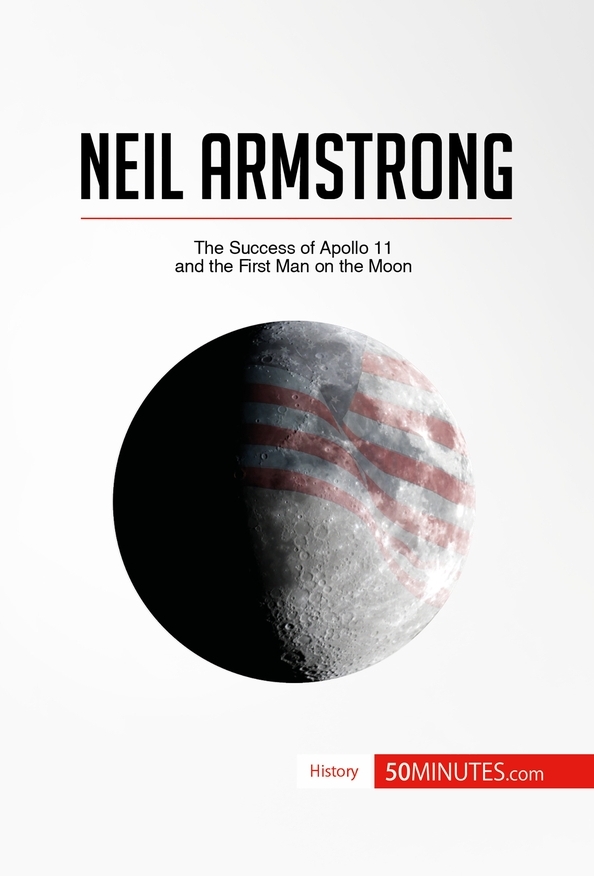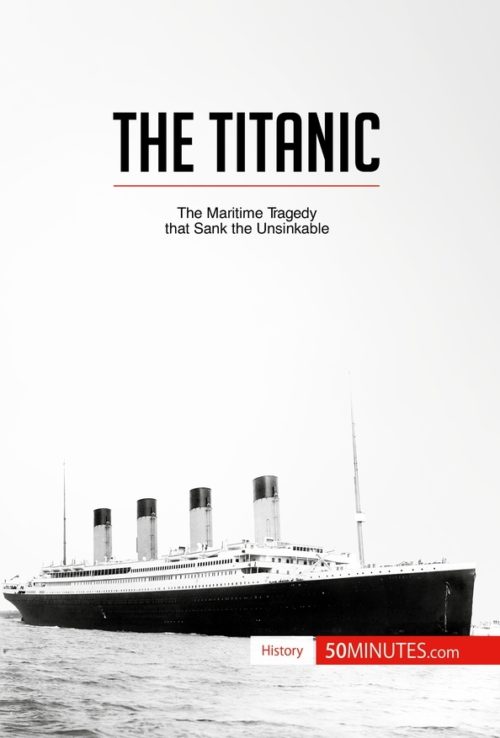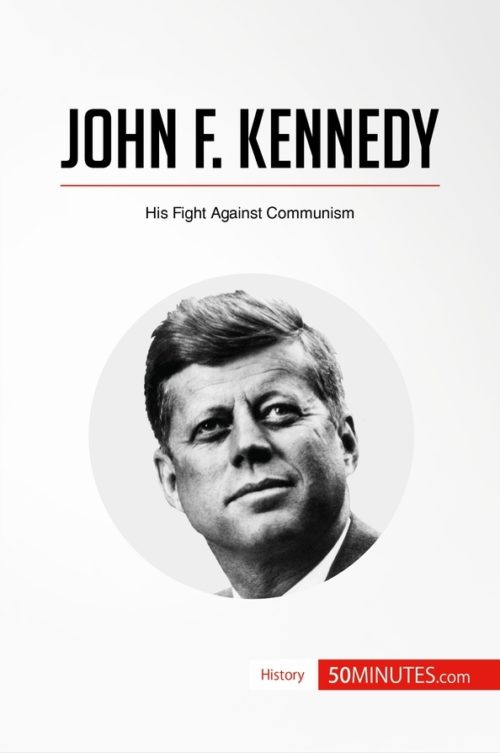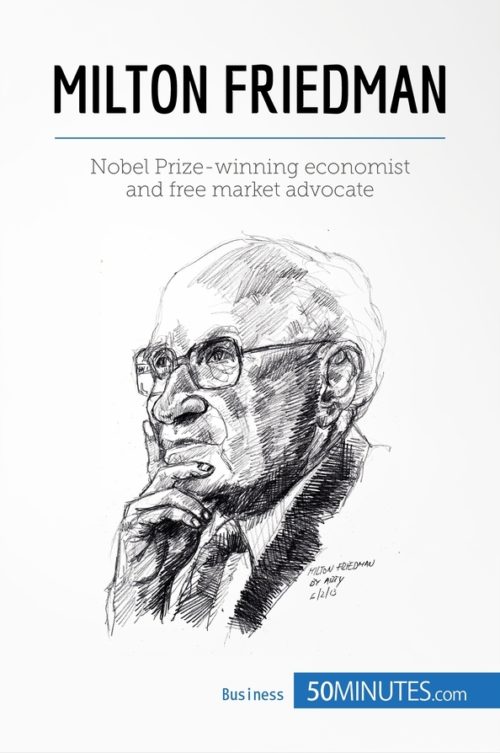Neil Armstrong
Neil Armstrong
The Success of Apollo 11 and the First Man on the Moon
$4.99
978280627609439EBookPlurilingua PublishingOn 21 July 1969, the American astronaut Neil Armstrong, the commander of the Apollo 11 spaceship, became the first person in history to set foot on the Moon. This crucial event marked the peak of the Space Race, which pitted the Cold War rivals the USA and the USSR against one another as they sent artificial satellites, probes and eventually humans into space. With his "one small step for man, one giant leap for mankind", Armstrong secured his place in history and opened a new frontier in space exploration. In just 50 minutes, you will find out about the background to the achievements of Armstrong and his fellow astronauts Buzz Aldrin and Michael Collins and understand the important legacy of the Moon landing.
This straightforward and informative book provides a thorough discussion of the impact of Apollo 11's mission, including the benefits it brought to the American economy and the technological and scientific progress it was responsible for. It also features a full biography of Neil Armstrong, a valuable introduction to the political, social and economic context and an evaluation of the impact of the Moon landing, giving you all the essential information about this pioneering astronaut.
About Neil Armstrong
Neil Armstrong was born in 1930, and was passionate about flying from an early age. He applied to join NASA in 1962, a few years into the Space Race, and was the first American civilian to become an astronaut. He took part in the Gemini program, where he learnt about space flights, spacewalks and orbital maneuvers, before being appointed commander of Gemini 8. After his groundbreaking mission with Apollo 11, he opted not to return to space, and instead embarked on a teaching career at the University of Cincinnati and participated in numerous committees of inquiry for NASA. He died in 2012, at the age of 82.
This clear and accessible 39-page book is structured as follows:
Introduction to Neil Armstrong
Biography of Neil Armstrong
A love for aviation and aerospace
Commander of Apollo 11
After the Moon landing
Political, social and economic context
A world plunged into the Cold War
The Soviet conquest of space
The US delay and Kennedy's leap
The Apollo 11 mission
10 seconds to go
The Moon objective
"One small step for man, one giant leap for mankind"
Walking on new soil
Houston, we're coming home
Impact of Armstrong's work
Technological benefits
Space exploration
Summary
On 21 July 1969, the American astronaut Neil Armstrong, the commander of the Apollo 11 spaceship, became the first person in history to set foot on the Moon. This crucial event marked the peak of the Space Race, which pitted the Cold War rivals the USA and the USSR against one another as they sent artificial satellites, probes and eventually humans into space. With his "one small step for man, one giant leap for mankind", Armstrong secured his place in history and opened a new frontier in space exploration. In just 50 minutes, you will find out about the background to the achievements of Armstrong and his fellow astronauts Buzz Aldrin and Michael Collins and understand the important legacy of the Moon landing.
This straightforward and informative book provides a thorough discussion of the impact of Apollo 11's mission, including the benefits it brought to the American economy and the technological and scientific progress it was responsible for. It also features a full biography of Neil Armstrong, a valuable introduction to the political, social and economic context and an evaluation of the impact of the Moon landing, giving you all the essential information about this pioneering astronaut.
About Neil Armstrong
Neil Armstrong was born in 1930, and was passionate about flying from an early age. He applied to join NASA in 1962, a few years into the Space Race, and was the first American civilian to become an astronaut. He took part in the Gemini program, where he learnt about space flights, spacewalks and orbital maneuvers, before being appointed commander of Gemini 8. After his groundbreaking mission with Apollo 11, he opted not to return to space, and instead embarked on a teaching career at the University of Cincinnati and participated in numerous committees of inquiry for NASA. He died in 2012, at the age of 82.
This clear and accessible 39-page book is structured as follows:
Introduction to Neil Armstrong
Biography of Neil Armstrong
A love for aviation and aerospace
Commander of Apollo 11
After the Moon landing
Political, social and economic context
A world plunged into the Cold War
The Soviet conquest of space
The US delay and Kennedy's leap
The Apollo 11 mission
10 seconds to go
The Moon objective
"One small step for man, one giant leap for mankind"
Walking on new soil
Houston, we're coming home
Impact of Armstrong's work
Technological benefits
Space exploration
Summary
application/pdf1 20th century, American history, Cold War, science, Space race, technological innovation, USA, USSR
DOWNLOAD THIS BOOK
On 21 July 1969, the American astronaut Neil Armstrong, the commander of the Apollo 11 spaceship, became the first person in history to set foot on the Moon. This crucial event marked the peak of the Space Race, which pitted the Cold War rivals the USA and the USSR against one another as they sent artificial satellites, probes and eventually humans...
Read more
On 21 July 1969, the American astronaut Neil Armstrong, the commander of the Apollo 11 spaceship, became the first person in history to set foot on the Moon. This crucial event marked the peak of the Space Race, which pitted the Cold War rivals the USA and the USSR against one another as they sent artificial satellites, probes and eventually humans into space. With his “one small step for man, one giant leap for mankind”, Armstrong secured his place in history and opened a new frontier in space exploration. In just 50 minutes, you will find out about the background to the achievements of Armstrong and his fellow astronauts Buzz Aldrin and Michael Collins and understand the important legacy of the Moon landing.
This straightforward and informative book provides a thorough discussion of the impact of Apollo 11’s mission, including the benefits it brought to the American economy and the technological and scientific progress it was responsible for. It also features a full biography of Neil Armstrong, a valuable introduction to the political, social and economic context and an evaluation of the impact of the Moon landing, giving you all the essential information about this pioneering astronaut.
About Neil Armstrong
Neil Armstrong was born in 1930, and was passionate about flying from an early age. He applied to join NASA in 1962, a few years into the Space Race, and was the first American civilian to become an astronaut. He took part in the Gemini program, where he learnt about space flights, spacewalks and orbital maneuvers, before being appointed commander of Gemini 8. After his groundbreaking mission with Apollo 11, he opted not to return to space, and instead embarked on a teaching career at the University of Cincinnati and participated in numerous committees of inquiry for NASA. He died in 2012, at the age of 82.
This clear and accessible 39-page book is structured as follows:
- Introduction to Neil Armstrong
- Biography of Neil Armstrong
- A love for aviation and aerospace
- Commander of Apollo 11
- After the Moon landing
- Political, social and economic context
- A world plunged into the Cold War
- The Soviet conquest of space
- The US delay and Kennedy’s leap
- The Apollo 11 mission
- 10 seconds to go
- The Moon objective
- “One small step for man, one giant leap for mankind”
- Walking on new soil
- Houston, we’re coming home
- Impact of Armstrong’s work
- Technological benefits
- Space exploration
- Summary






